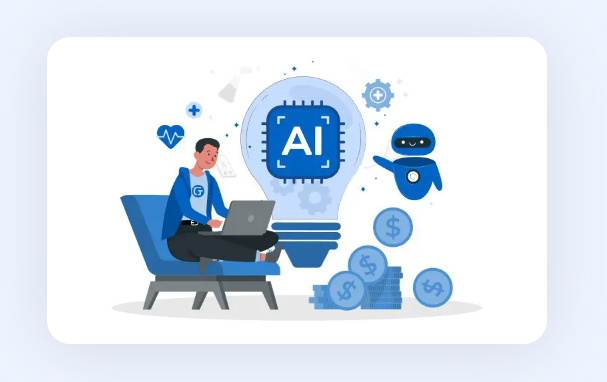How Can Technology Reduce Healthcare Costs?

Introduction
In an era of rapid technological advancement, the integration of technology into healthcare systems has emerged as a pivotal force in reducing healthcare costs. This article explores the multifaceted ways in which technology is revolutionizing the healthcare industry, from streamlining processes to enhancing patient care. Dive into the future of healthcare, where cutting-edge technologies pave the way for more efficient and cost-effective solutions.
Leveraging Data Analytics for Cost Efficiency
Data-Driven Decision Making In the realm of healthcare, data is a goldmine. Leveraging advanced analytics enables healthcare providers to make informed decisions, optimize resource allocation, and identify cost-saving opportunities. The integration of data analytics not only enhances operational efficiency but also contributes to more accurate budgeting, ultimately reducing overall healthcare expenditure.
Predictive Analytics in Preventive Care Predictive analytics takes center stage in preventive care, identifying potential health issues before they escalate. By proactively addressing health concerns, healthcare providers can significantly reduce the financial burden associated with treating advanced-stage illnesses. The synergy between technology and predictive analytics marks a paradigm shift towards a more cost-effective and preventative approach to healthcare.
Telemedicine: A Game-Changer in Cost Reduction
Virtual Consultations and Remote Monitoring The rise of telemedicine introduces a revolutionary approach to healthcare delivery. Virtual consultations and remote monitoring empower patients to access healthcare services from the comfort of their homes, reducing the need for frequent hospital visits. This not only saves time but also cuts down on transportation costs, making healthcare more accessible and affordable.
Telemedicine's Impact on Rural Healthcare Rural areas often face challenges in accessing quality healthcare. Technology bridges this gap by bringing healthcare services to remote locations through telemedicine. By minimizing the need for patients to travel long distances, technology contributes significantly to reducing healthcare costs in underserved communities.
Integrating AI in Diagnostics and Treatment
Precision Medicine Through AI Artificial Intelligence (AI) is reshaping the landscape of diagnostics and treatment. Personalized and precision medicine, powered by AI algorithms, ensures that patients receive tailored treatment plans. This not only enhances the effectiveness of medical interventions but also minimizes unnecessary procedures, leading to substantial cost savings in the long run.
Automated Administrative Processes The administrative workload in healthcare can be overwhelming. AI-driven automation streamlines administrative processes, reducing the need for extensive manpower. This operational efficiency directly translates into cost reduction, allowing healthcare providers to allocate resources more strategically.
Electronic Health Records: Enhancing Efficiency and Cost-Effectiveness
Centralized Patient Information Transitioning from traditional paper-based records to Electronic Health Records (EHRs) brings a plethora of advantages. Centralized patient information facilitates seamless communication among healthcare professionals, preventing redundant tests and procedures. This streamlined approach not only improves patient care but also contributes to significant cost savings.
Reducing Errors and Redundancies EHRs mitigate the risk of errors associated with manual record-keeping. By eliminating redundancies and ensuring accurate documentation, technology-driven EHRs enhance the overall efficiency of healthcare delivery. This reduction in errors translates to both improved patient outcomes and financial savings.
How Can Technology Reduce Healthcare Costs?
Remote Patient Monitoring Solutions Technology empowers healthcare providers with real-time insights into patients' health through remote monitoring solutions. By detecting early warning signs and preventing hospital readmissions, these solutions contribute to substantial cost savings. Embracing technology in patient care not only improves health outcomes but also optimizes healthcare expenditure.
FAQs
Q: Can technology truly make healthcare more affordable? Technology plays a pivotal role in streamlining processes, reducing errors, and optimizing resource allocation, ultimately making healthcare more affordable and accessible.
Q: How does telemedicine contribute to cost reduction? Telemedicine eliminates the need for frequent hospital visits, reducing transportation costs and making healthcare more accessible, especially in remote areas.
Q: Are Electronic Health Records (EHRs) secure? Yes, EHRs are designed with robust security measures to protect patient information, ensuring confidentiality and compliance with privacy regulations.
Q: Can AI replace human healthcare professionals? AI enhances the capabilities of healthcare professionals but cannot replace the human touch and empathy crucial in patient care.
Q: How does predictive analytics work in preventive care? Predictive analytics uses historical data and AI algorithms to identify patterns, helping healthcare providers intervene early and prevent the escalation of health issues.
Q: Are there any downsides to relying on technology in healthcare? While technology brings numerous benefits, challenges include initial implementation costs and the need for ongoing staff training to maximize its potential.
Conclusion
The fusion of technology and healthcare is ushering in an era of unprecedented transformation. From data analytics to telemedicine and AI-driven diagnostics, technology is proving to be a powerful ally in reducing healthcare costs. Embracing these innovations not only enhances efficiency but also ensures that healthcare becomes more affordable and accessible for all. As we navigate the future, the synergy between technology and healthcare promises a healthier, cost-effective, and technologically advanced world.
- Whats New
- Shopping
- Wellness
- Sports
- Theater
- Religion
- Party
- Networking
- Music
- Literature
- Art
- Health
- Games
- Food
- Drinks
- Fitness
- Gardening
- Dance
- Causes
- Film
- Crafts
- Other/General
- Cricket
- Grooming
- Technology

